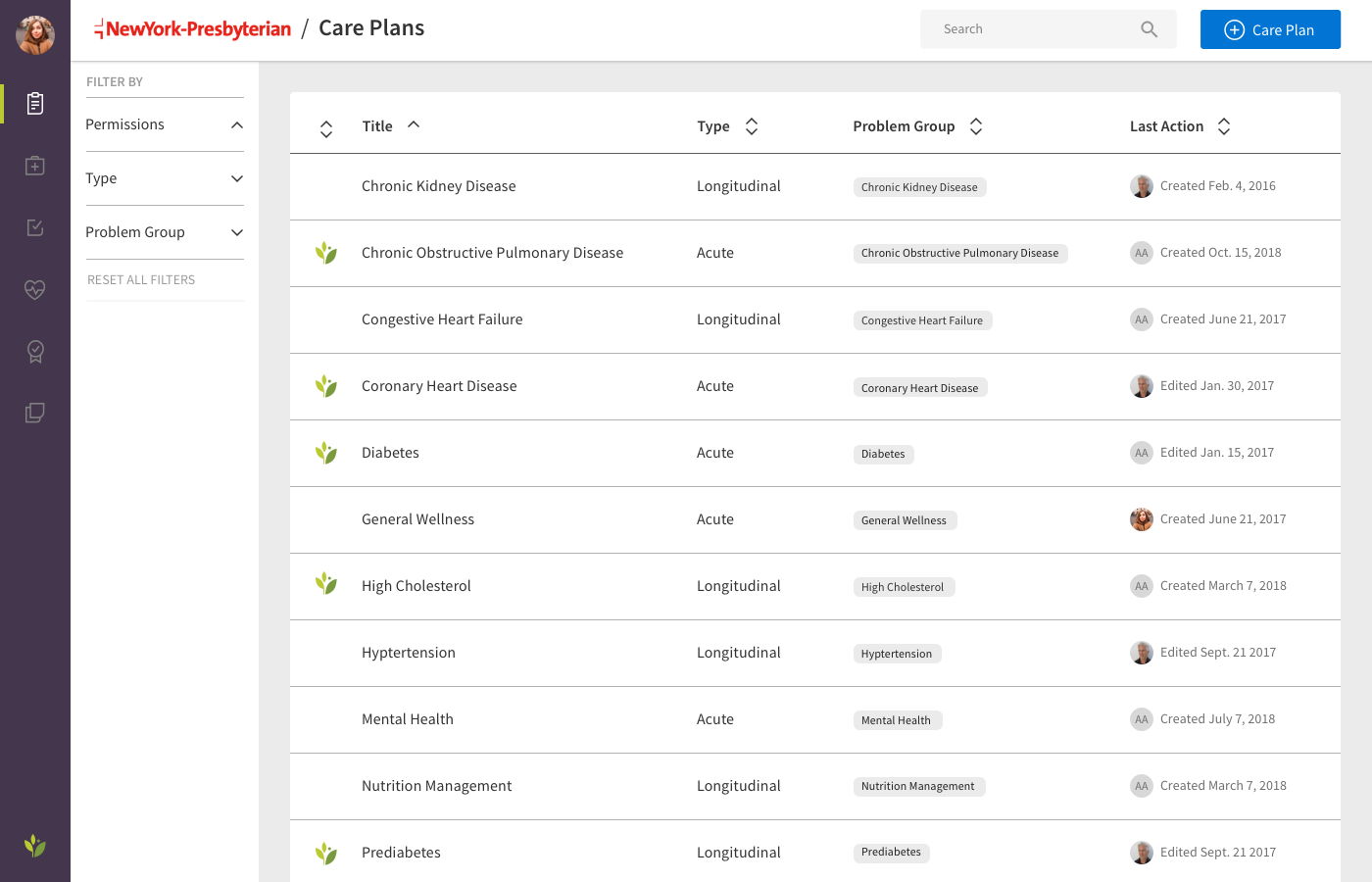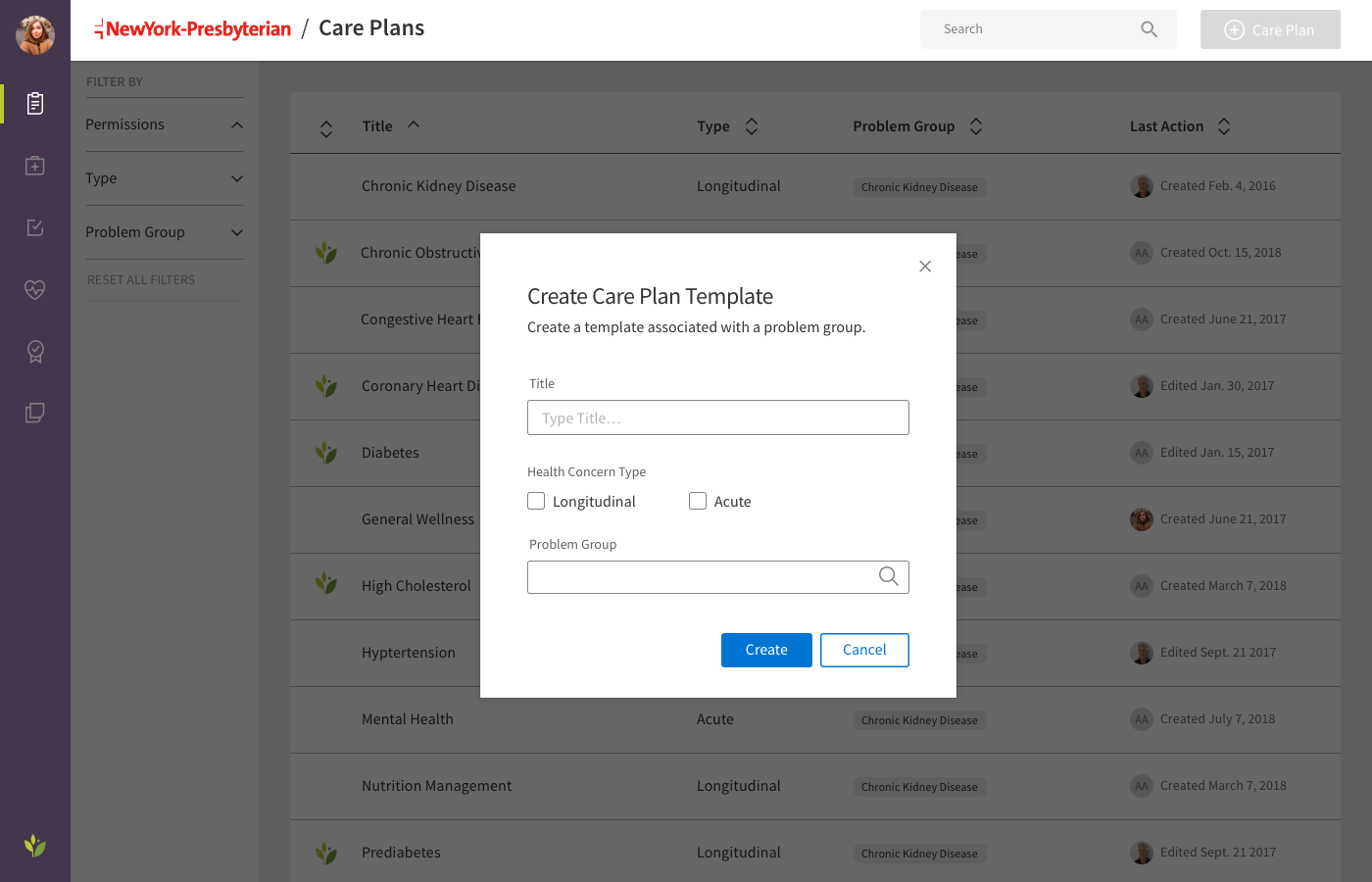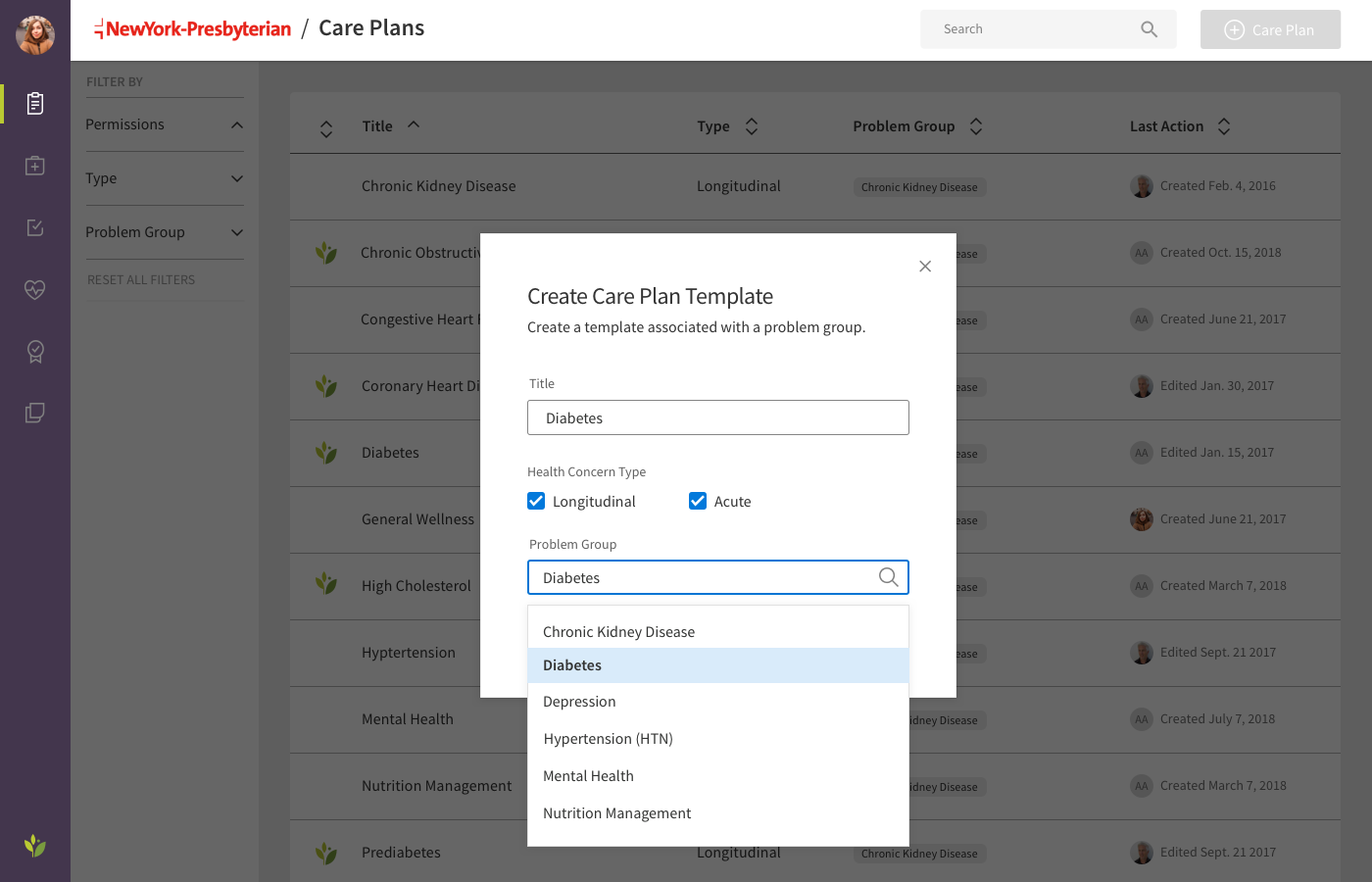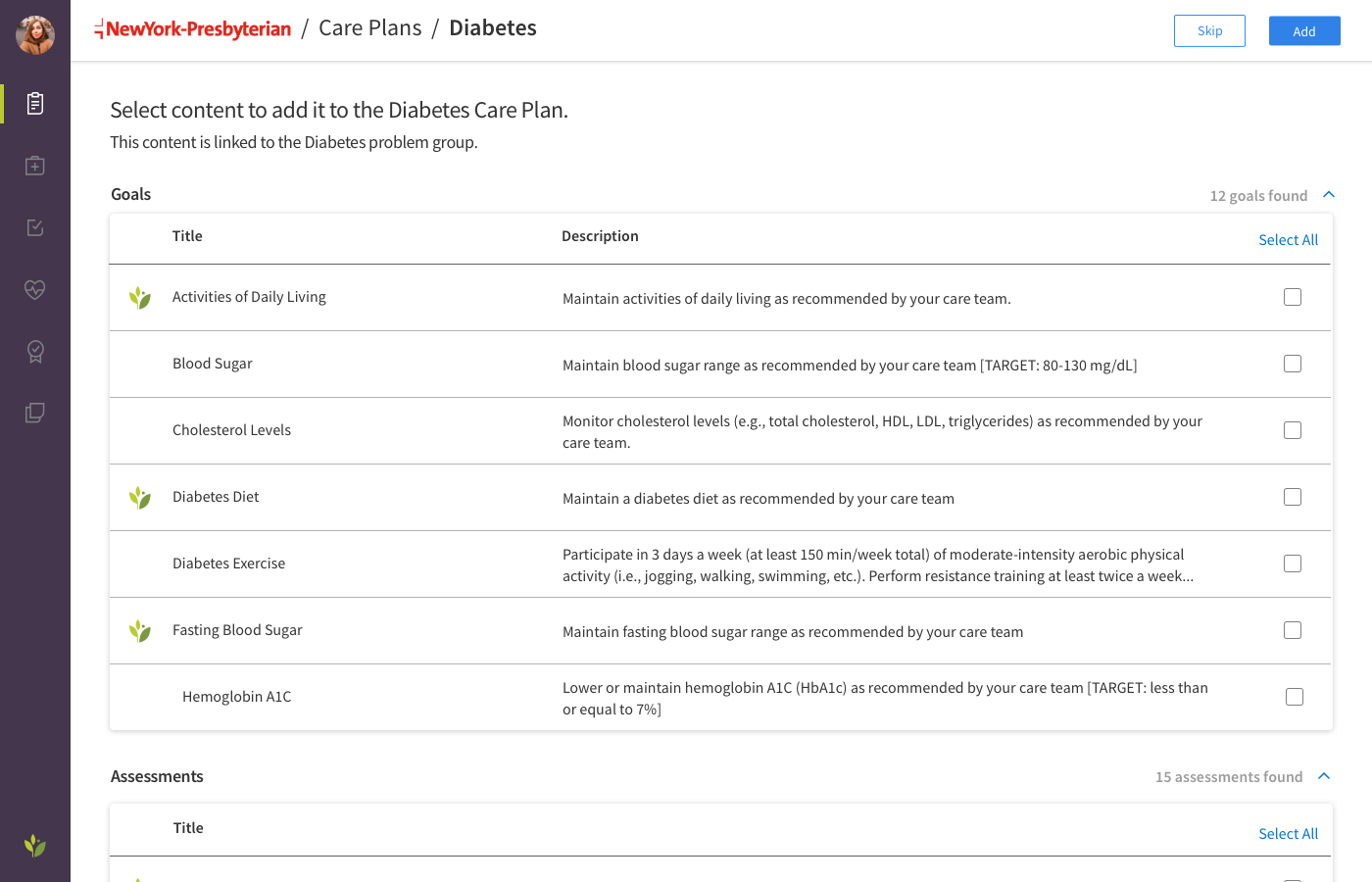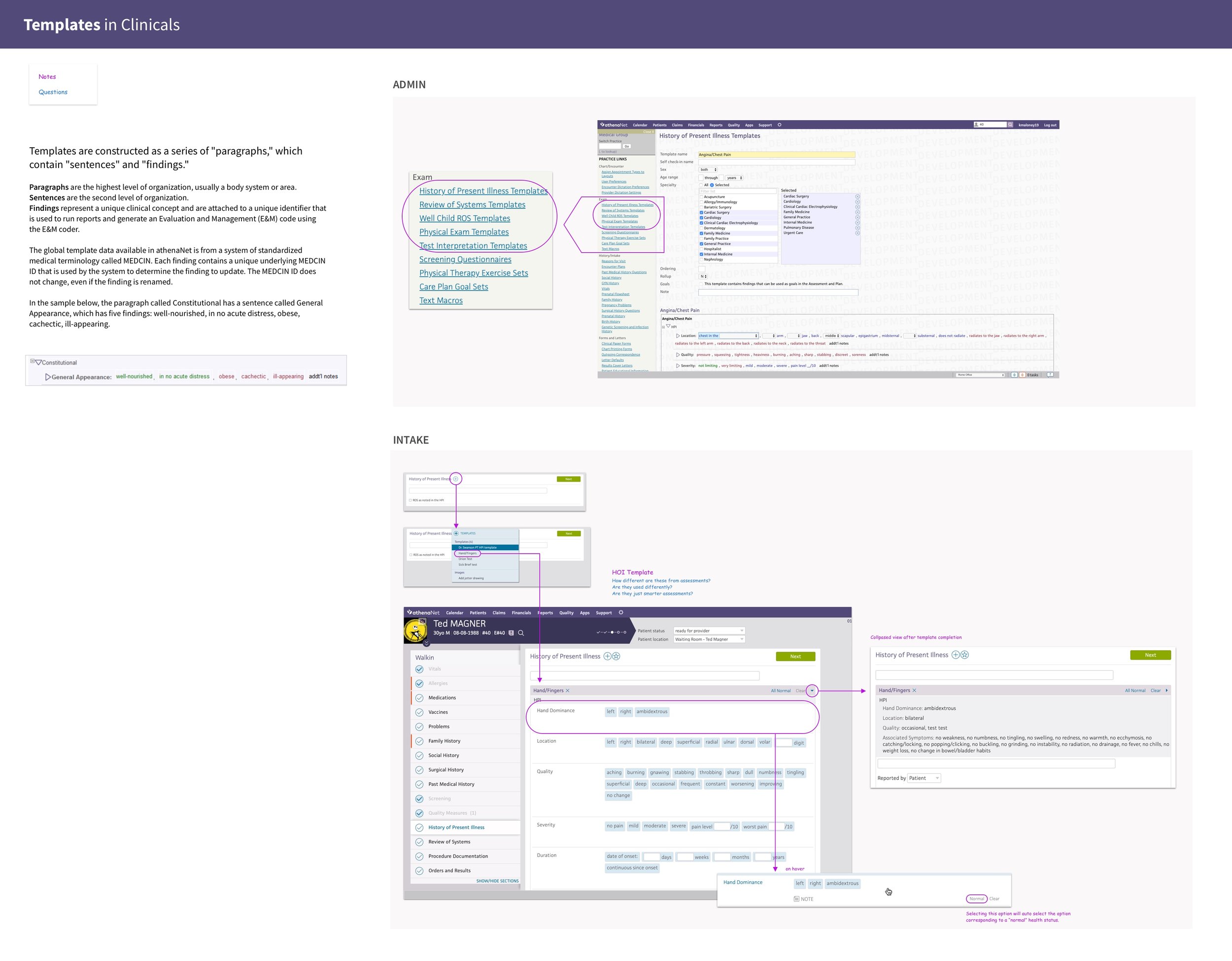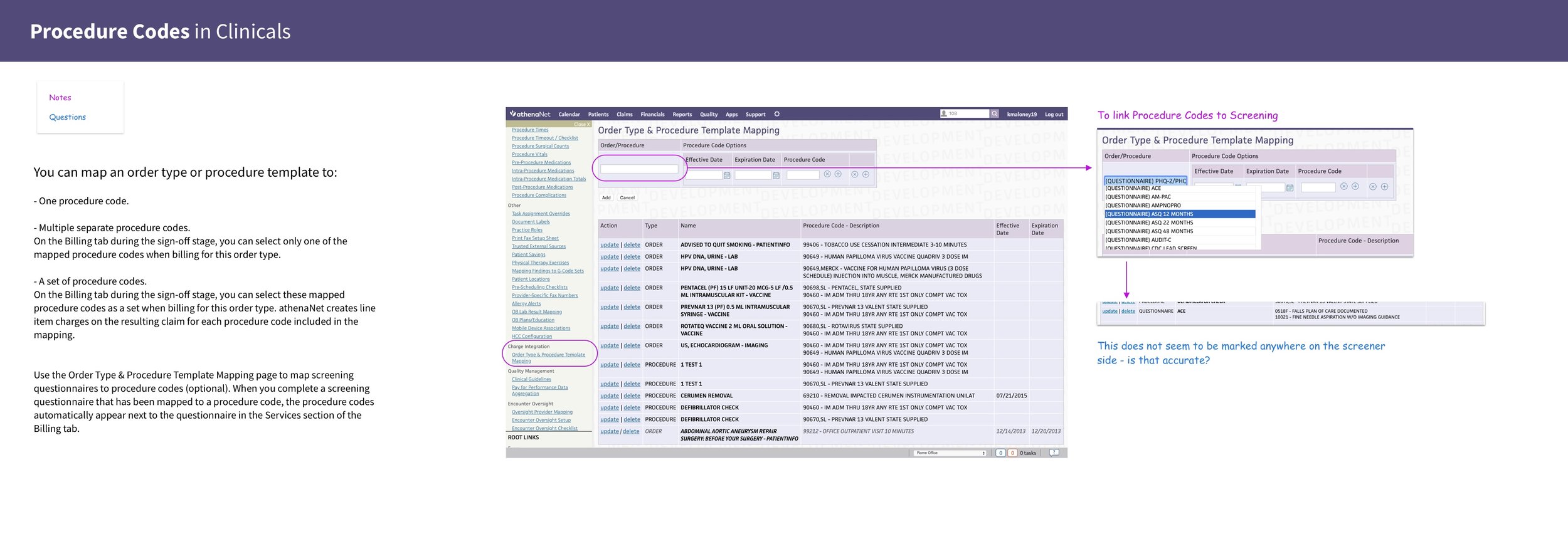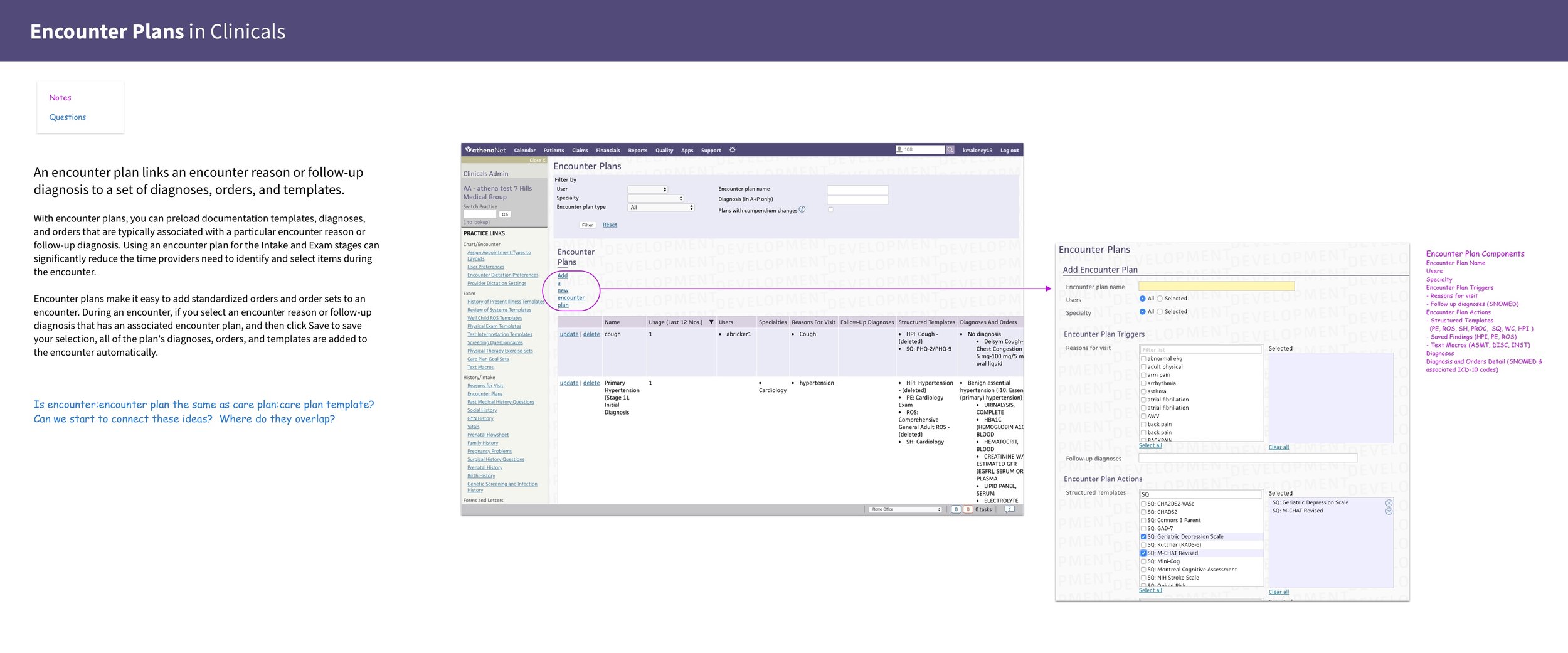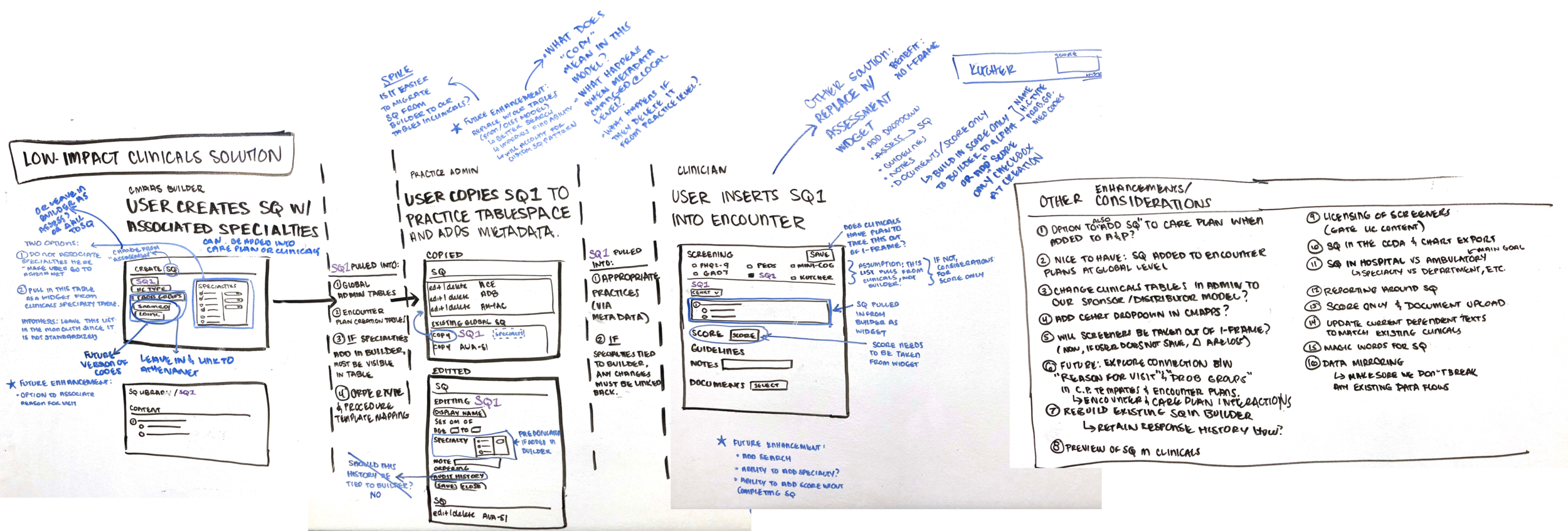Care Management as a Service
The Ask: Retrofit a legacy care management content creator to fit the needs of a modern user base.
My Role: Lead Scrum Designer through discovery and definition
The rise of complex, chronic diseases and the move from has created a new demand for care management. More than half of Americans live with at least one chronic disease.
And with providers moving from fee for service to a value based care model there is also a need to help providers track the quality of care patients are receiving so that they can receive payment for their services.
Care Managers are at the center of this collaborative ecosystem between providers and the patient and making sure their care and health is being tracked over a longer period of time. In order for Care Managers to do their job successfully they need access to the right clinical content as well as the ability to make custom care plans for each patient.
This is where my team came in. With the help of clinical content authors we created content tools for the content authors to use within the care management system. As the designer on the team I was responsible for developing a valuable user experience for the content authors to be able to efficiently create and manage this content. Below you will see a high level App Map of the Content Builder and all of its components.
My role touched on every part of the design process, from inception of an idea and discovery, to design and implementation with my development team. The initiatives I worked on during my year on the team are shown below.
The User
Since our tool began as an internal only product we had the unique ability to set up regular touch points with internal users. Meetings were set up bi-weekly to discuss new opportunities within the product experience, do workshops, and validate existing feature initiatives. Below are the four main users we worked with the most closely.
These content creators created the content that care managers could then use to manage their patients.
All content in our product mapped with appropriate metadata.
During one of the user workshops we had the users sort and prioritize10 different features for each of the initiatives we were working on to help plan the releases.
Enhancing the Assessment Builder
The assessment editor was the first part of the tool the team and I worked on. The assessment tool had already been built but in legacy code and with a great deal of bugs. There was little value to the user’s experience and it was creating lack of efficiency in the content creator’s workflow.
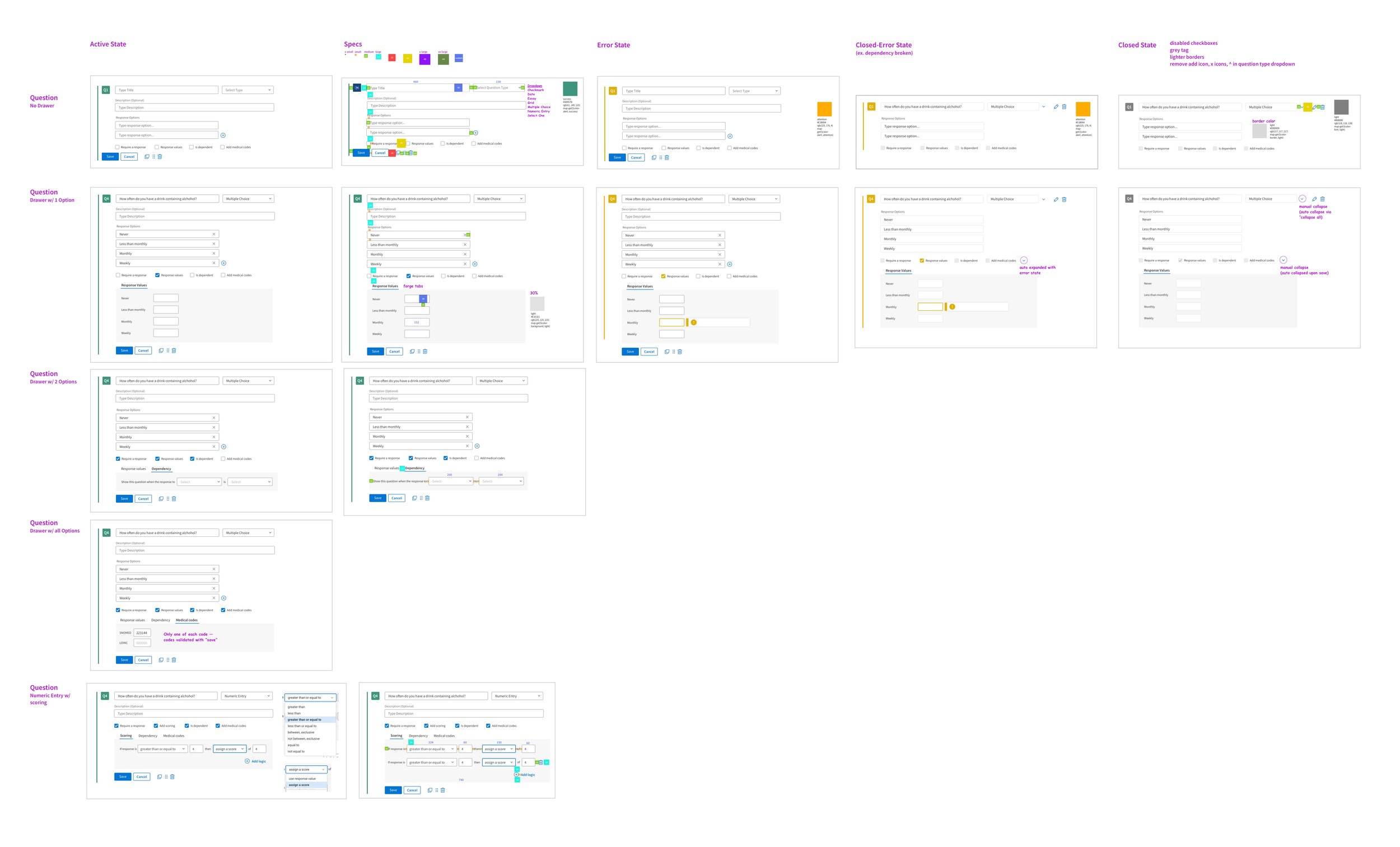
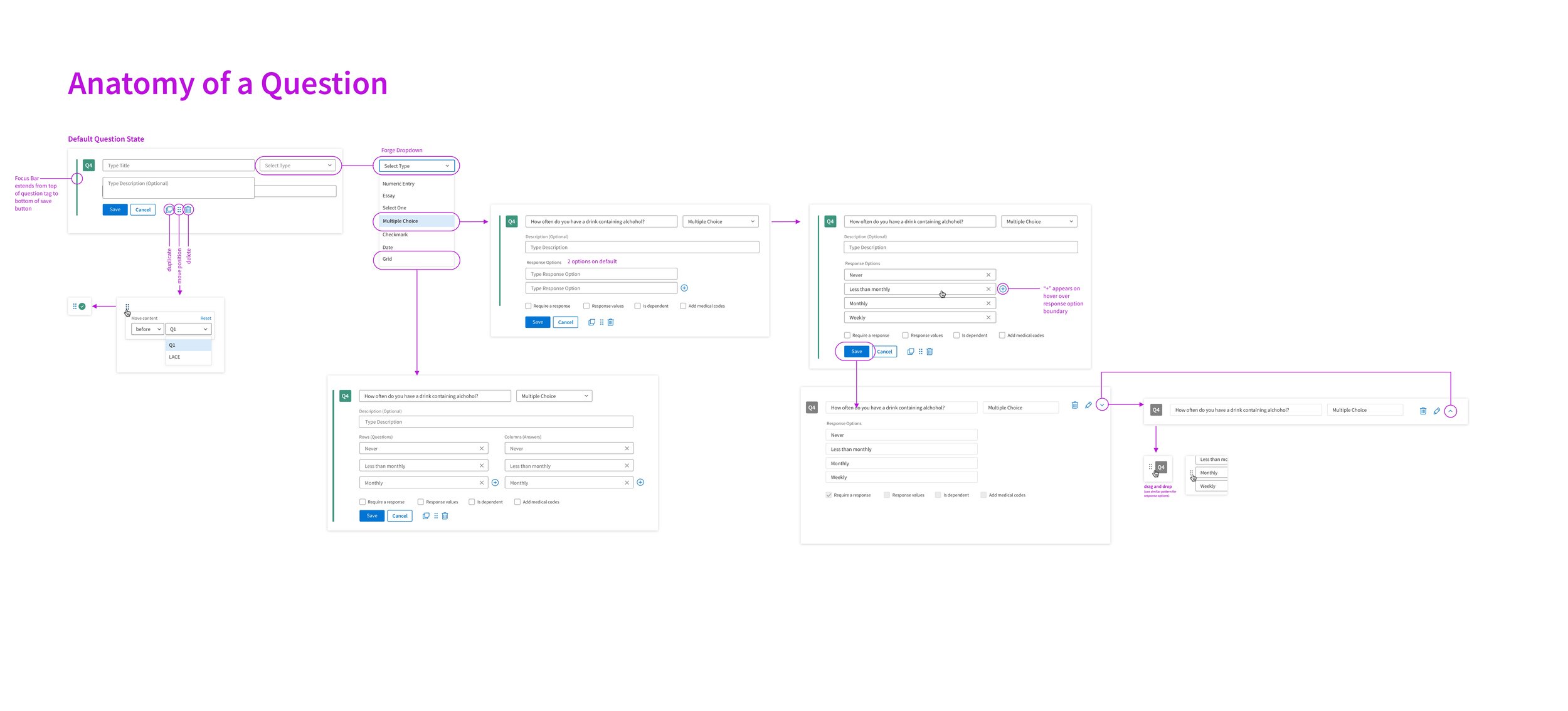
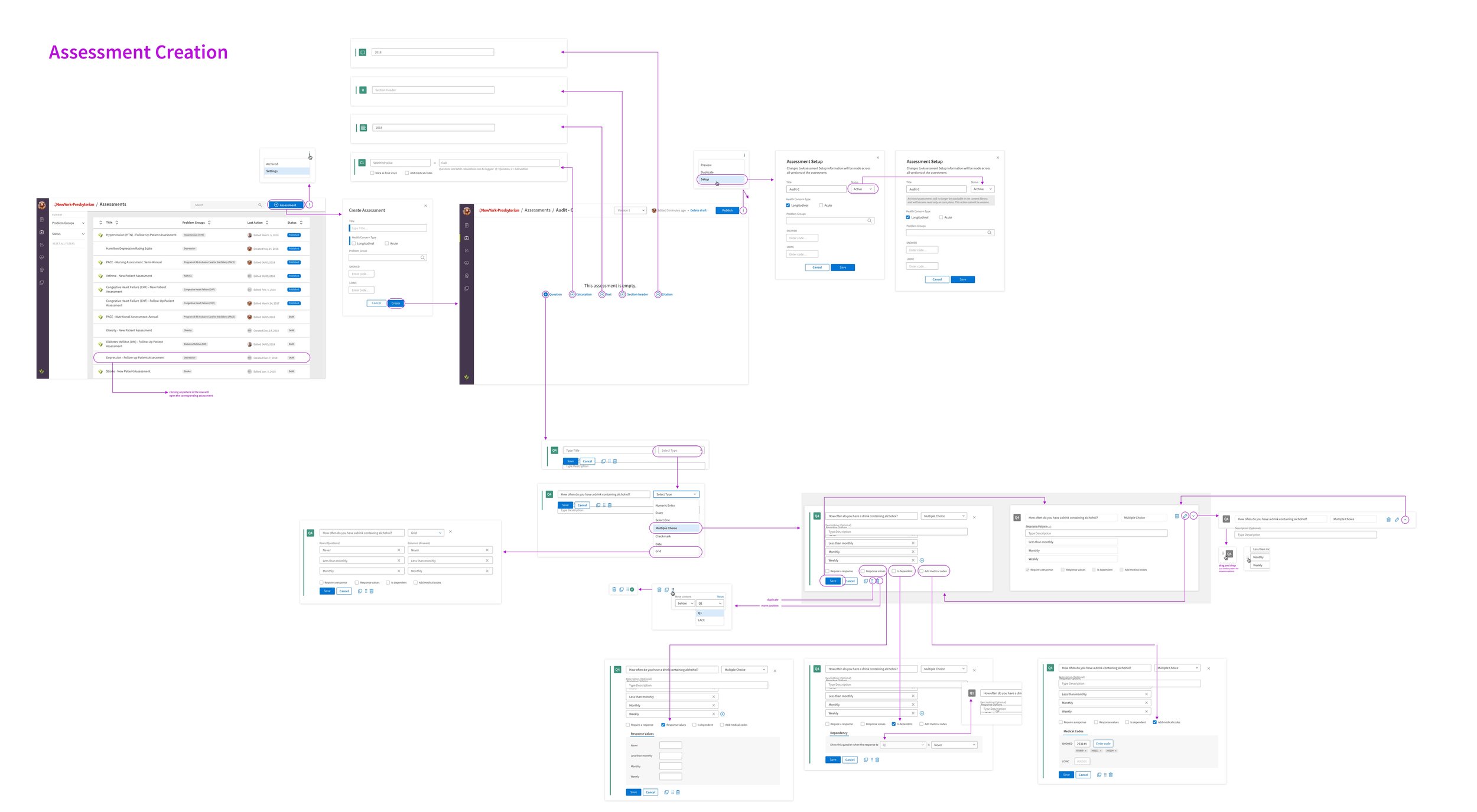
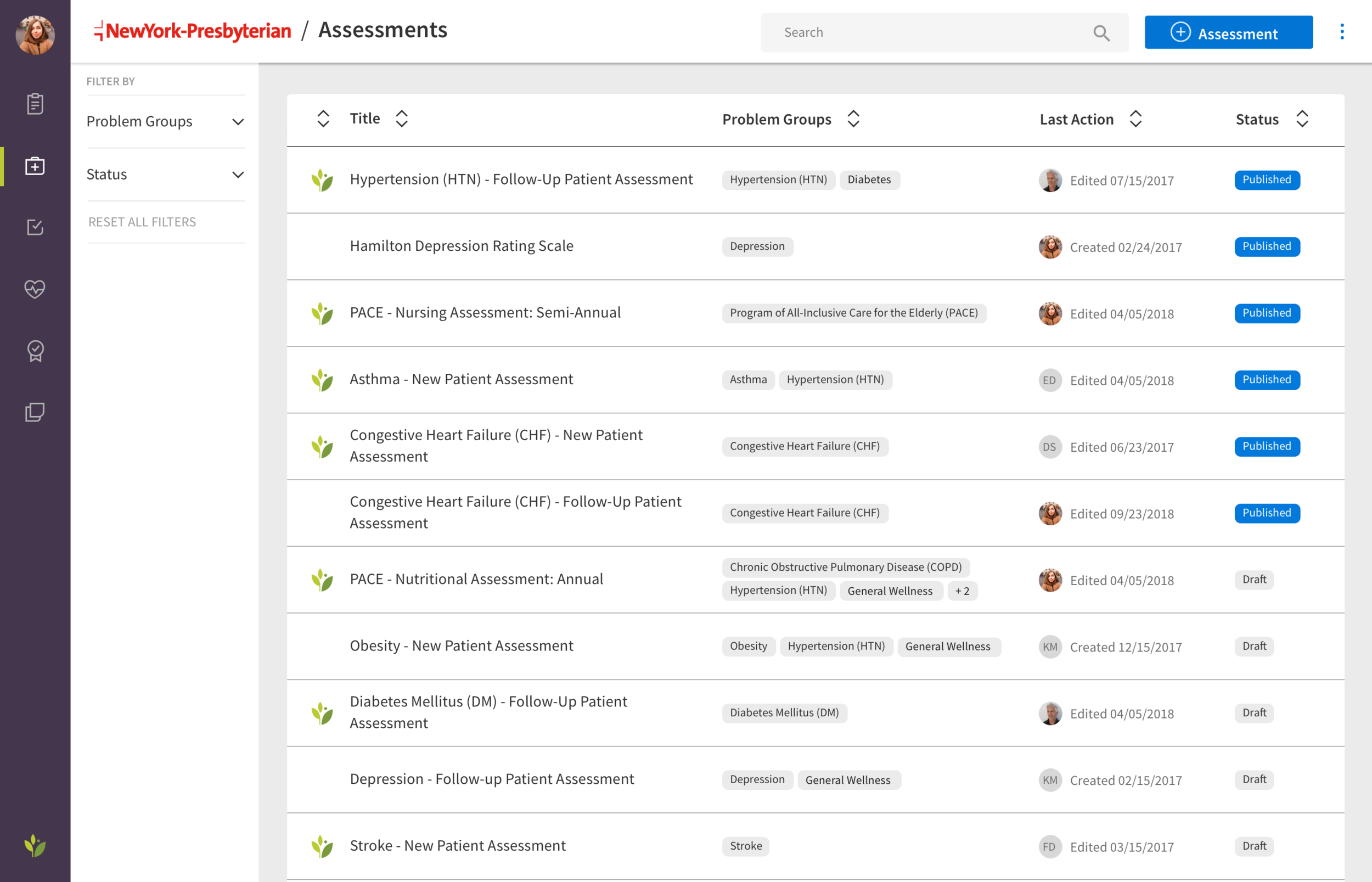
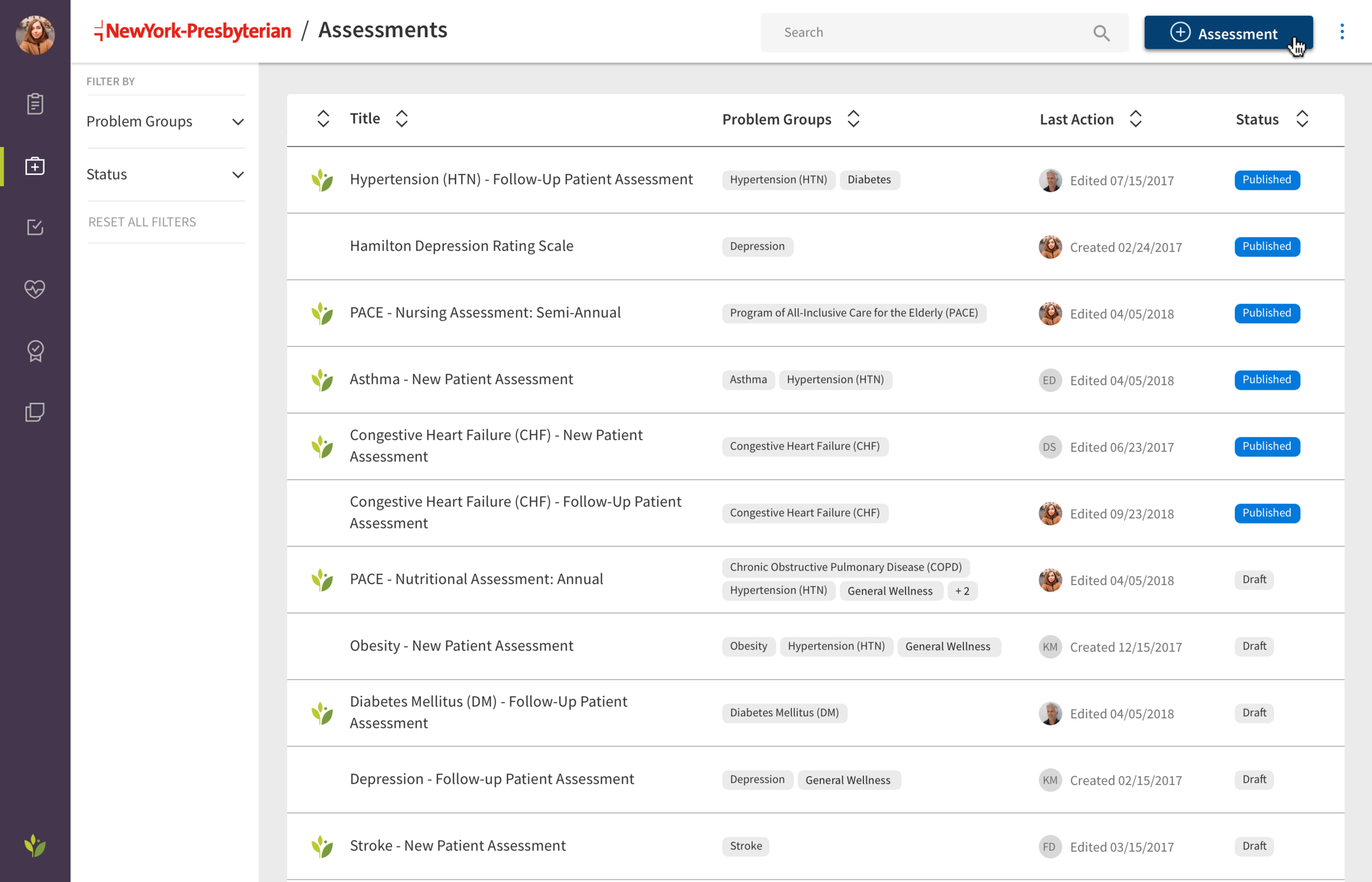
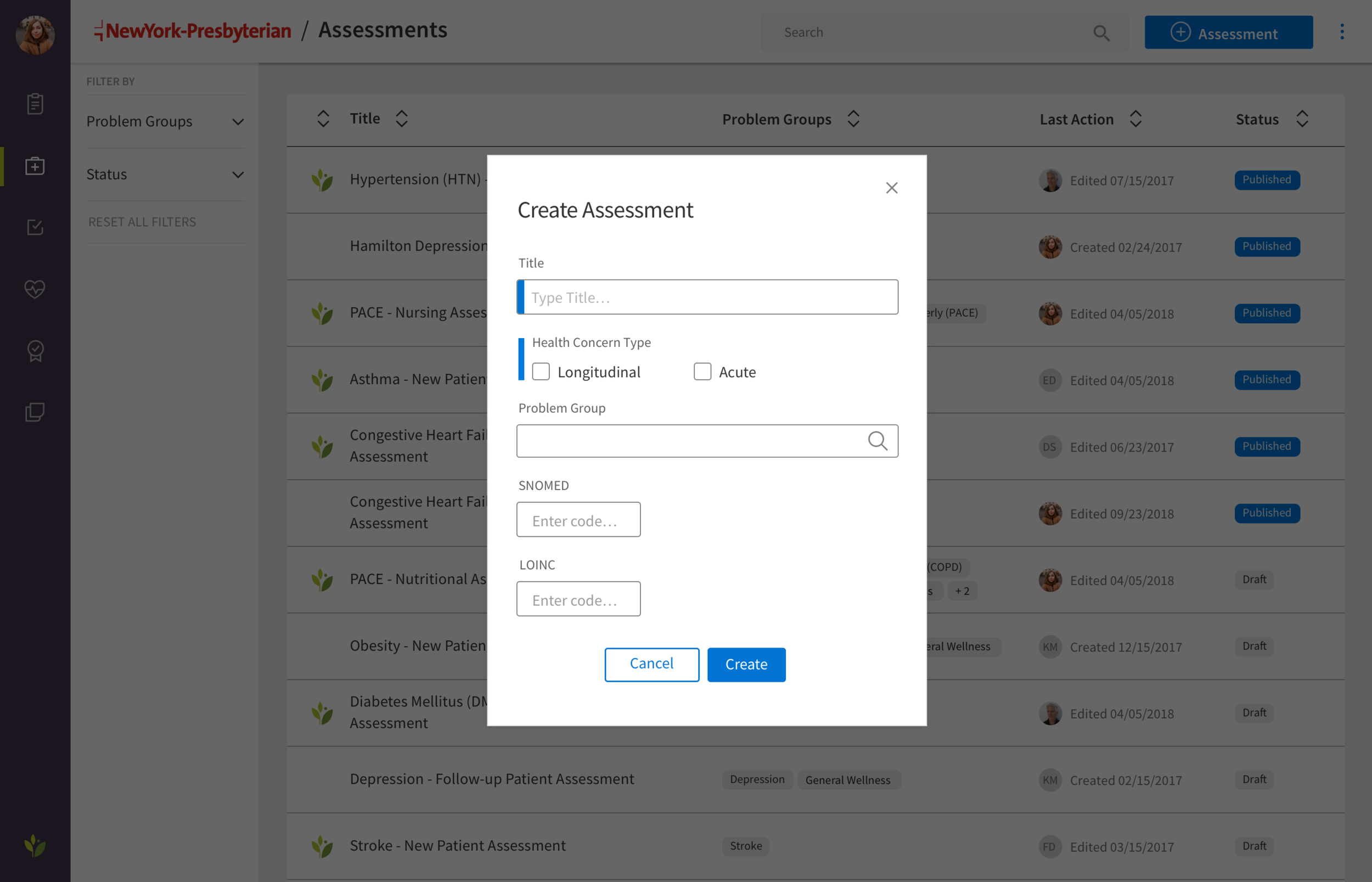
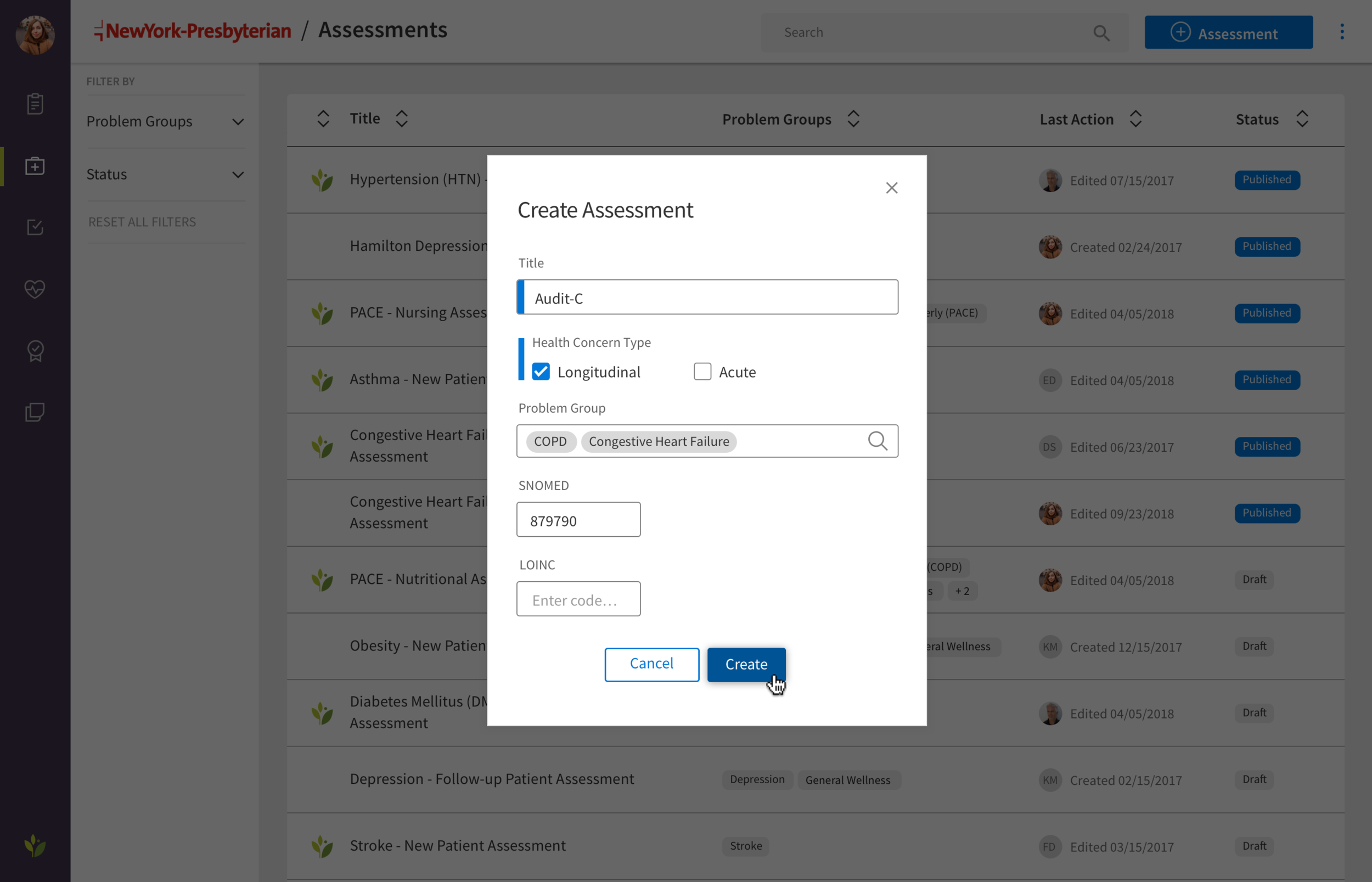
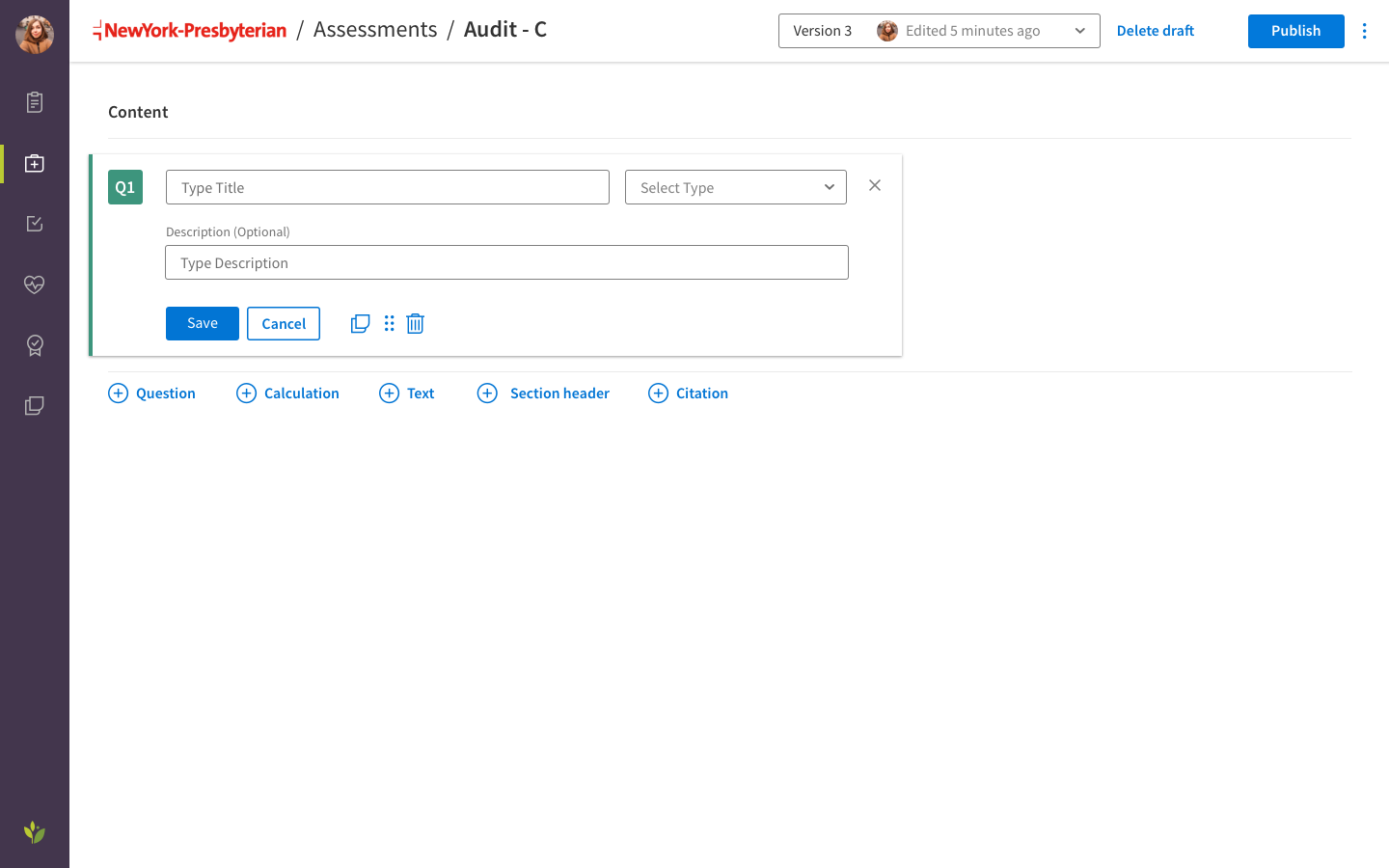
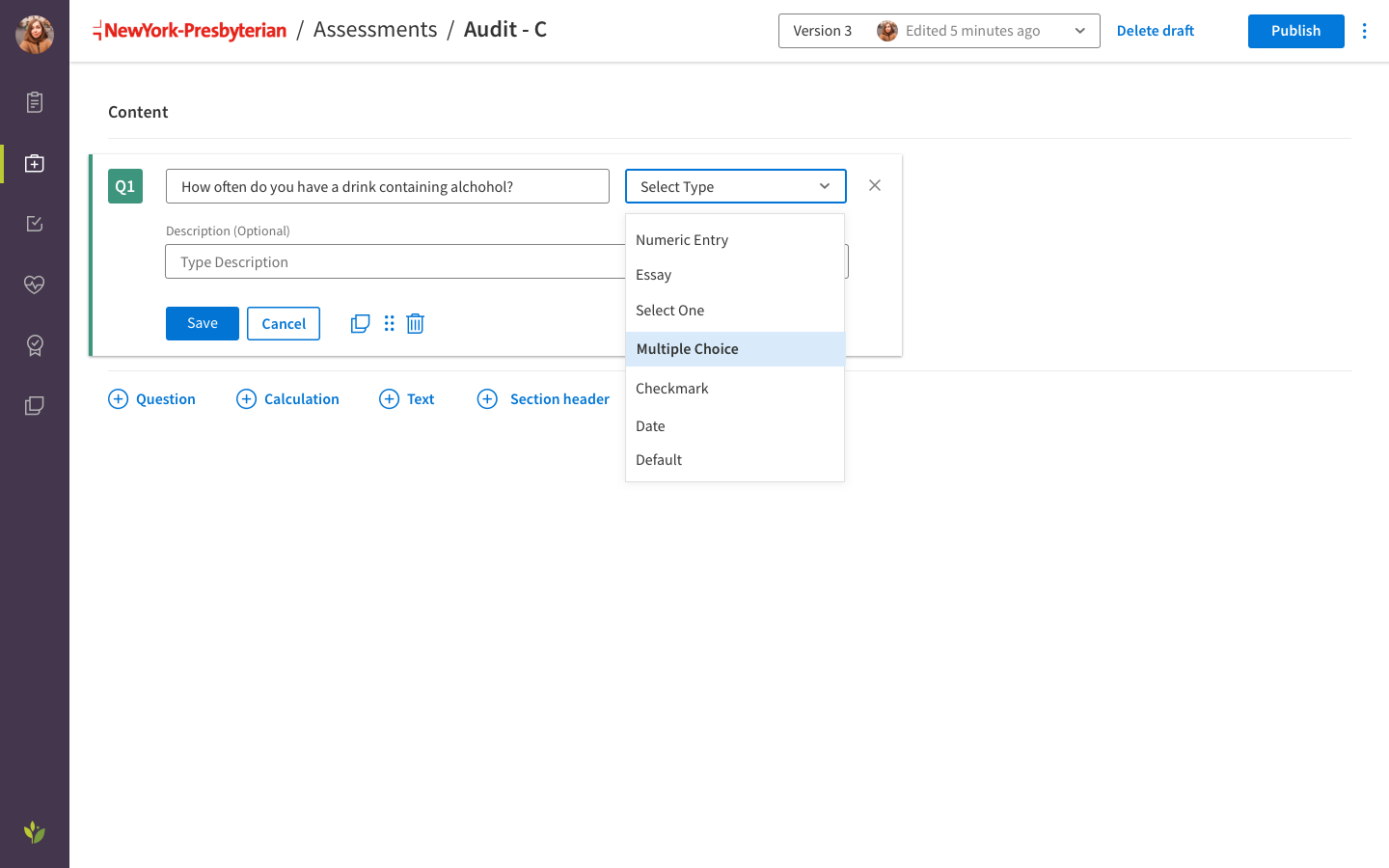
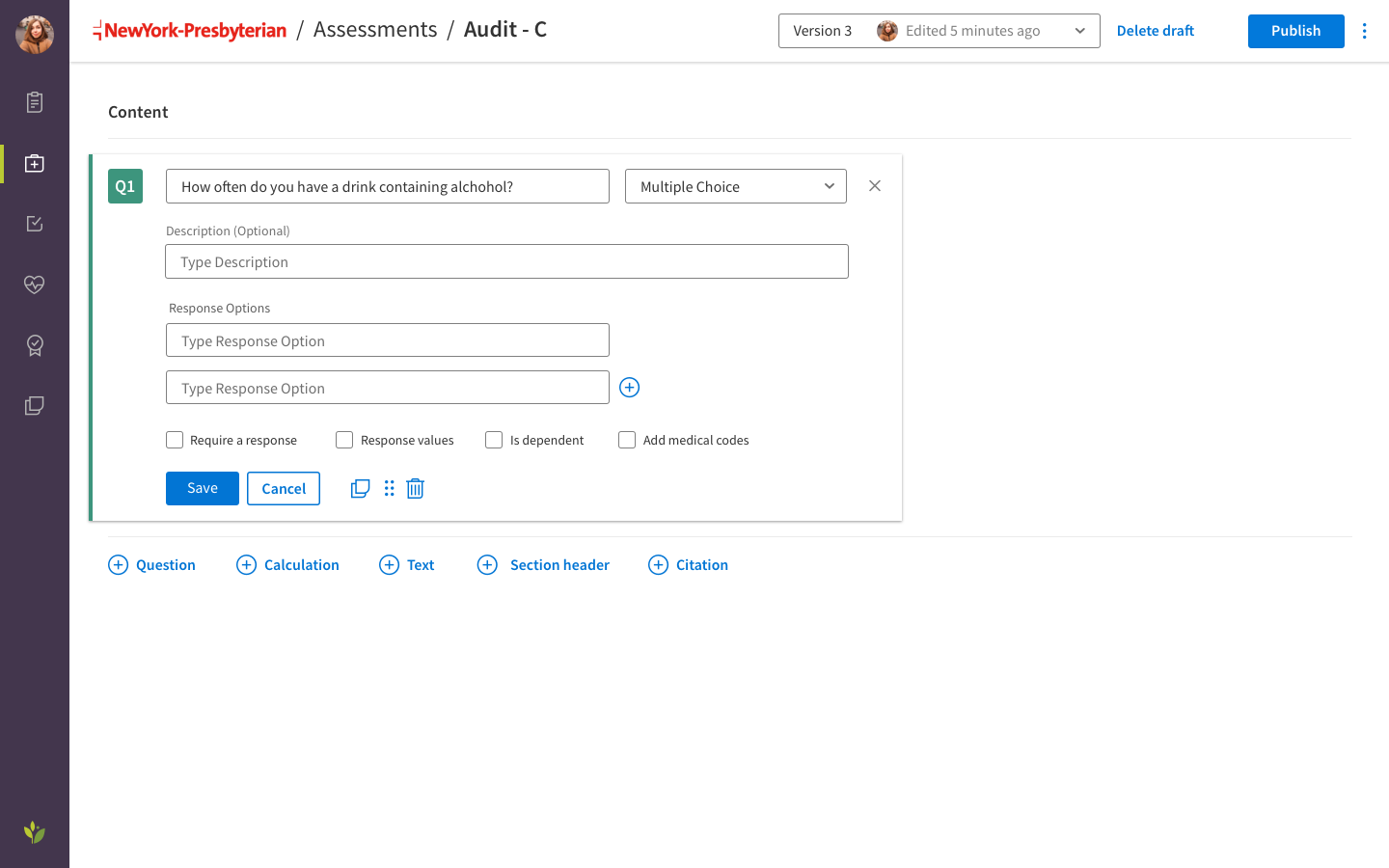
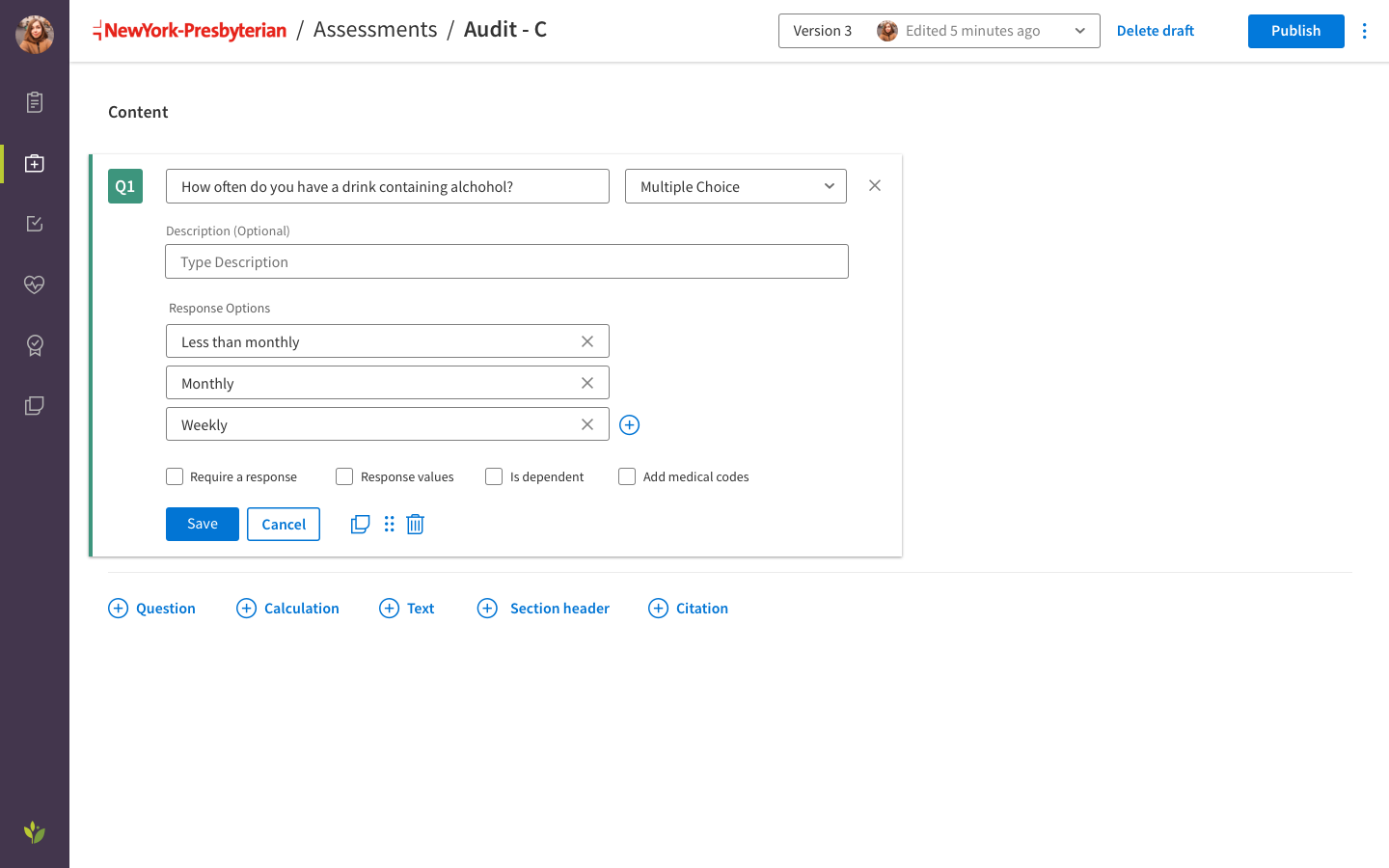
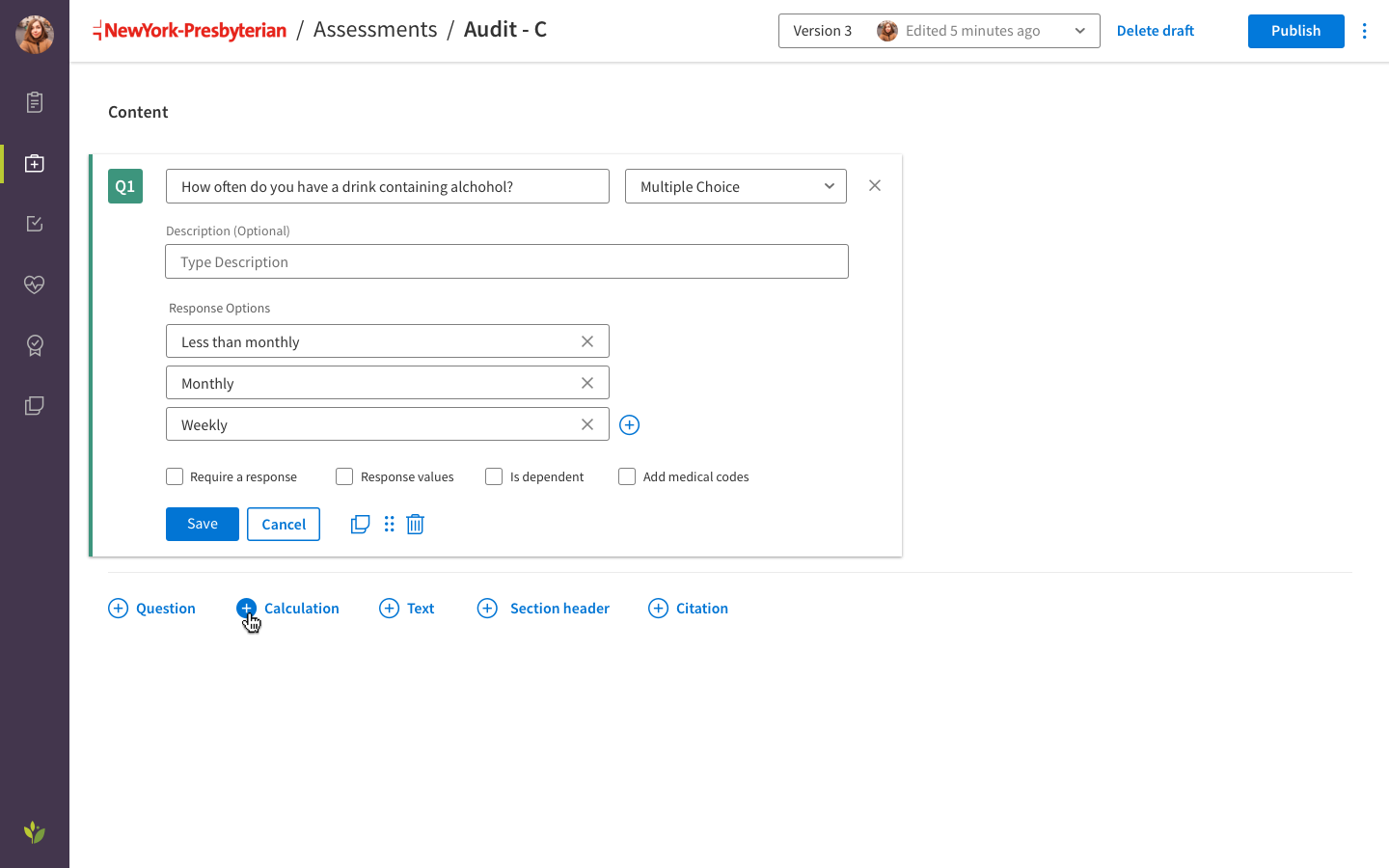
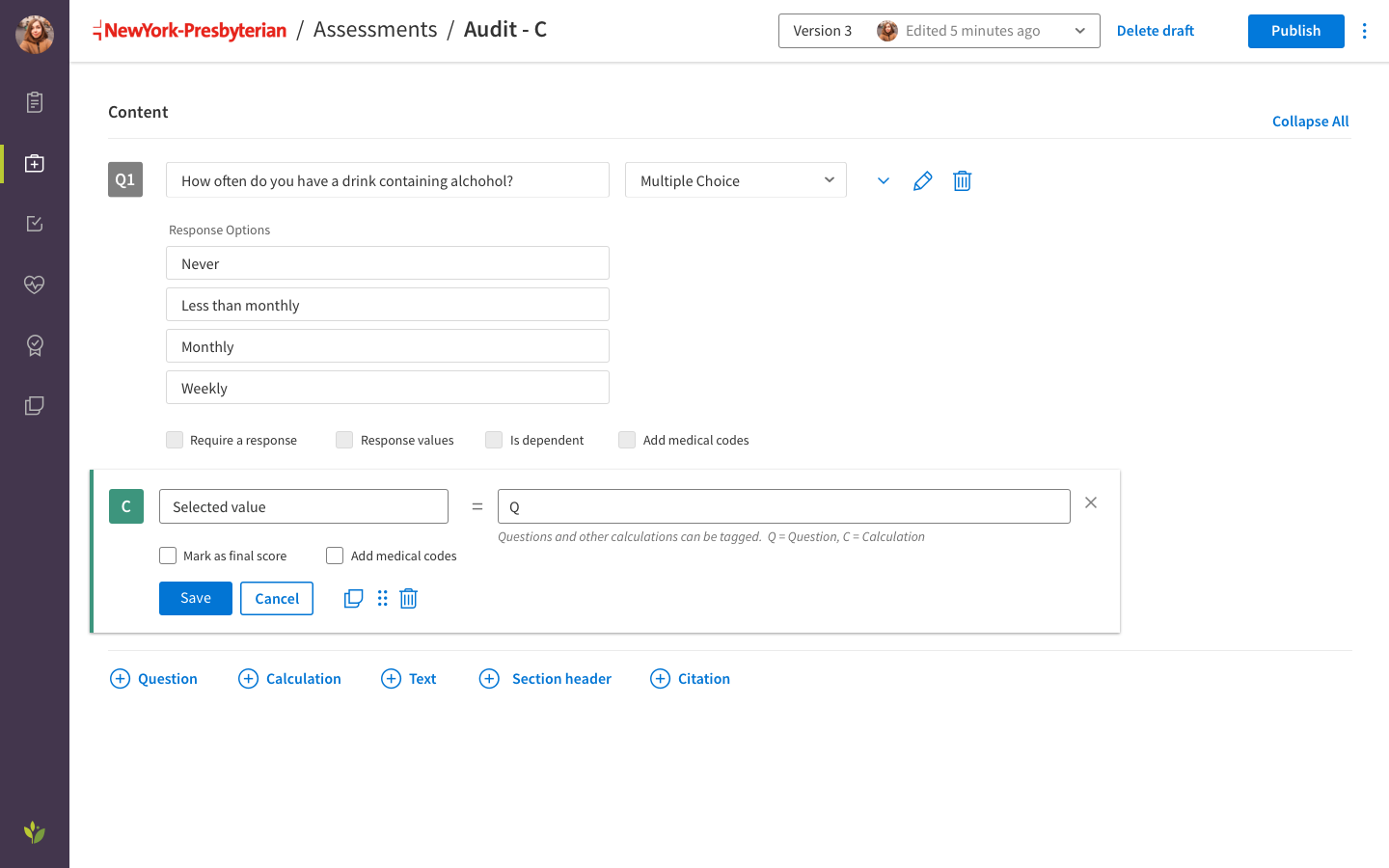
Assessment Integration with Clinicals
Since there was a cross company need for a tool to build assessments, we immediately started to research where the assessment builder would be useful and meeting with those teams to fully understand their specific needs. Integration with Clinicals, one of Athena’s biggest product areas, became our first priority since their current workflow to build questionaries and assessments relied completely on development resources. To attack this integration I had to become a mini subject matter expert in all things Clinicals to understand how we could best integrate with their workflow. The following is the process my product owner and I went through to make sure we were providing the most value to all stakeholders.
I first did an analysis of the clinicals tool specifically focusing on the areas where Screening questionnaires would be affected.
We met with users through the research process to make sure we were providing the most value with our solution. We did a variety of exercises with them to gain insight. Shown below is one of our users participating in a prioritization exercise to help us identify what would be most valuable for an MVP experience.
All research synthesis was captures on the board below.
Once we had developed clickable prototypes we created narrated videos and then sent them out to a larger audience of users using our internal research tool. The users then scored the concept based on the principles shown in the image to the right.
Creating Care Plan Templates
Another experience I created while on the content team was for a Care Plan Template. This was an acclerator to help Care Managers make care plans in a more efficient and timely manner. Since every piece of content was associated with a Health Concern Type, if a Care Manager linked a health concern type to a patient they could immediately select all content relevant to that patient.
